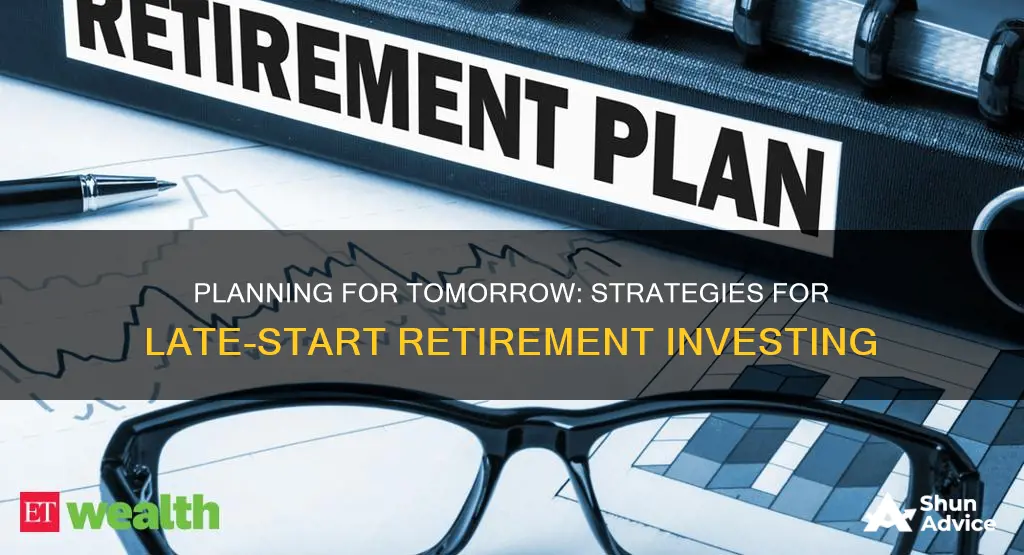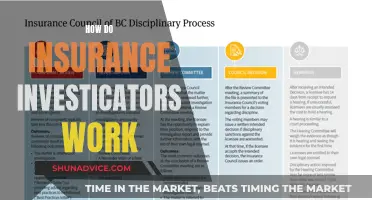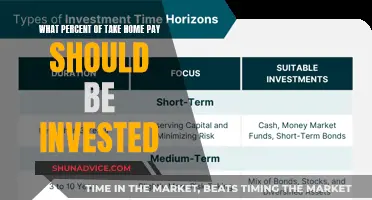
If you're in your 50s, retirement is no longer a distant prospect. It's time to take stock of your finances and plan for the future. Crunching the numbers and figuring out your retirement goals is crucial, even if you don't have a concrete plan yet.
It's essential to assess your current financial situation and calculate your net worth by subtracting your debts and liabilities from your assets and savings. From there, you can project your future expenses, considering both expected and unexpected costs, such as travel or medical bills.
Now is also the time to take advantage of tax-deferred accounts and catch-up contributions to maximise your savings. Additionally, consider diversifying your portfolio across asset classes, including stocks, bonds, real estate, and more.
While it's important to boost your retirement savings, don't neglect your non-retirement savings accounts. Ensure you have an emergency fund, and work on getting any debt under control, especially credit card debt.
Finally, remember that it's never too late to start saving for retirement. Even if you're already 50, you can still take steps to secure your financial future and work towards the retirement you desire.
| Characteristics | Values |
|---|---|
| How much should you have saved at 50? | There is no hard-and-fast rule, but five to six times your yearly salary is a good benchmark. |
| What to do if you have no retirement savings | Open a retirement account, such as a 401(k), 403(b), or IRA. |
| Catch-up contributions | In 2023, employees can contribute $22,500 per year to their retirement plan ($23,000 in 2024). If you’re over 50, you can contribute up to $7,500 more. |
| Starting your own business | Consider using your industry knowledge to start a business to boost your retirement savings. |
| Taxes | Think about what taxes you’ll need to pay during retirement. |
| Social Security | The earliest you can start taking Social Security is 62, but it’s worth thinking about your plan for collecting benefits. |
| Side hustles | Consider a side hustle to increase your earnings. |
| Stocks | Don’t abandon stocks in your portfolio, especially if you’re still a decade or more from retirement. |
| Diversification | Diversify your portfolio across asset classes, such as large, small, and mid-size companies, established and emerging international markets, and real estate. |
| Asset allocation shortcuts | Consider a target-date fund or a robo-advisor to manage your portfolio. |
| Healthcare costs | Prepare for unexpected medical costs, which can deplete your savings. |
| Budgeting | Create a spending plan to set aside funds for luxuries such as travel. |
| Professional advice | Meet with a financial advisor to help you plan for retirement. |
What You'll Learn

Assess your current financial situation
When it comes to assessing your current financial situation, there are a few key steps to take. First, determine how much you have in the bank and calculate your total net worth. This involves subtracting your debts and liabilities (e.g. mortgage, credit card balances, etc.) from your assets and savings (e.g. cash, retirement accounts, investments, etc.). Getting a clear picture of your financial status is crucial before planning for retirement.
Next, consider your savings and investments thus far. Evaluate whether you've been consistently saving and investing, and if you're taking advantage of tax-favoured retirement accounts and catch-up contributions. If you're behind on your savings goals, don't panic. Instead, focus on what you can do now to ensure you're ready for retirement. This may involve increasing your contributions to retirement plans and IRAs, or considering other investment options such as stocks, bonds, or real estate.
Additionally, take stock of any lingering debt. By your 50s, you may still have a mortgage or other significant financial obligations. Create a plan to tackle high-interest debt, such as credit card balances or personal loans, and work towards reducing your overall debt burden.
It's also important to project your future expenses and create a detailed retirement budget. Consider your expected costs, including healthcare, travel, or any large purchases. This will help you understand how much you need to save and invest to achieve your retirement goals.
Finally, don't forget to seek professional advice if needed. Meeting with a financial advisor can help ease your worries and ensure you have a comprehensive plan for your retirement. They can assist you in making sense of your current financial situation and provide guidance on the best path forward.
Under Armour: Buy Now or Never?
You may want to see also

Plan for future expenses
Planning for future expenses when retiring at 50 is a crucial aspect of financial preparedness. Here are some detailed instructions to help you effectively plan for future expenses:
Set Clear Retirement Goals:
Define your retirement goals and vision. Do you want to travel, move to a new city, or pursue new hobbies? Knowing your desired retirement lifestyle will help you estimate the required finances.
Calculate Your Retirement Needs:
As a rule of thumb, aim to save between five to six times your yearly salary by the time you reach 50. However, this may vary depending on your retirement plans. To get a more precise estimate, use online retirement calculators, which take into account factors like your current income, desired retirement age, and expected expenses.
Maximize Retirement Accounts:
Take advantage of tax-advantaged retirement accounts, such as 401(k) plans and Individual Retirement Accounts (IRAs). Contribute as much as possible to these accounts, especially if your employer offers matching contributions. Remember, the maximum contribution limits are higher for individuals over 50, allowing you to make catch-up contributions.
Prepare for Medical Expenses:
Medical costs can be significant in retirement, so it's essential to plan accordingly. Consider opening a Health Savings Account (HSA), which offers tax advantages and can be used to cover qualified medical expenses, including long-term care insurance. According to estimates, a couple in their mid-60s may need approximately $315,000 to cover health care costs in retirement.
Social Security Considerations:
While you can start receiving Social Security benefits as early as age 62, delaying retirement can significantly increase your monthly benefit amount. Consider your tax situation and consult a financial advisor to determine the optimal time to start collecting Social Security benefits.
Explore Additional Income Streams:
Diversifying your income sources can provide a financial cushion during retirement. Consider part-time work, consulting, or starting a side business based on your skills and interests. These additional income streams can supplement your retirement savings and provide more financial flexibility.
Remember, it's never too late to start planning for retirement. Even if you're already 50, you can take control of your financial future by setting clear goals, maximizing savings, and making strategic decisions about your investments and expenses.
Investments: Where Does the Money Go?
You may want to see also

Understand tax implications
Understand the Tax Implications
When planning for retirement, it's important to consider the tax implications of your investments and savings. Here are some key points to keep in mind:
- Taxes on Retirement Income: Most types of retirement income are taxable. This includes pension payments, withdrawals from 401(k)s or similar accounts, and distributions from Traditional IRAs. Social Security benefits may also be taxable, depending on your total income and marital status.
- Tax-Deferred vs. Roth Accounts: With traditional retirement accounts, you contribute pre-tax money, and taxes are paid when you withdraw the funds during retirement. Roth accounts, on the other hand, are funded with after-tax contributions, and qualified withdrawals during retirement are tax-free.
- Tax Benefits of Roth IRAs: Roth IRAs offer tax advantages, as you don't pay taxes on withdrawals after the age of 59½ if you meet certain requirements. Additionally, if you withdraw money early, you only pay taxes and penalties on the earnings, not the original contributions.
- Tax Deductions for Retirement Savings: The IRS offers tax benefits to individuals saving for retirement. You may be able to deduct your yearly contributions from taxable income, reducing the amount of tax you pay. However, this deduction is not available for Roth IRA contributions.
- Tax on Interest Income: If you use discretionary income for retirement and invest it in savings accounts like certificates of deposit or money market accounts, you will be taxed twice: once on the income and again on any interest earned.
- Early Withdrawal Penalties: Avoid early withdrawals from retirement accounts, as they incur a 10% tax penalty in addition to regular income tax. There are some exceptions to this rule, as outlined in IRS Publication 590.
- Required Minimum Distributions (RMDs): Keep in mind that you will need to start taking RMDs from your retirement accounts at a certain age, usually 73 or 75. Failing to take RMDs on time results in a 50% penalty on the amount not withdrawn. Roth IRAs do not have RMD requirements.
- Tax-Deferred Accounts and Catch-Up Contributions: As you approach retirement, take advantage of tax-deferred accounts like 401(k)s and IRAs. The IRS allows higher contribution limits for individuals aged 50 and older, known as catch-up contributions. For example, in 2024, individuals 50 and older can contribute up to $30,500 to their 401(k) and $8,000 to a traditional or Roth IRA.
- Spousal IRA: If you don't have earned income but your spouse does, consider using a spousal IRA. This allows the spouse with earned income to contribute on behalf of the other.
- Healthcare Costs and HSA: Remember that healthcare expenses are almost inevitable during retirement. Consider a healthcare plan that offers comprehensive benefits, and look into a health savings account (HSA) to take advantage of tax breaks like tax-deductible contributions and tax-deferred interest and earnings.
Americans: Investors or Not?
You may want to see also

Take advantage of tax-deferred accounts
Tax-deferred savings plans are a great way to minimise taxes and maximise the growth of your retirement savings. Here are some reasons why you should take advantage of tax-deferred accounts:
Lower Your Tax Bill Now
Tax deductions are powerful financial tools. By contributing the maximum amount to your tax-deferred accounts, you are essentially retaining a chunk of money that would have otherwise gone to the government, to be paid later. The higher your tax bracket, the more you will save. Even if your income is lower, you may still qualify for a significant tax benefit through the saver's tax credit.
Raise the Potential for Compounding
Compounding is a basic principle of investing. When you invest money in an account that produces earnings, any earnings received can generate their own earnings, and the cycle continues over time. Since tax-deferred accounts allow you to invest funds before paying taxes on them, you are giving more of your current funds an opportunity to take advantage of this compounding effect.
Save on Taxes in the Long Term
Many people expect to earn less in retirement than they did while working, as they downsize and rely on pensions, social security, and retirement accounts for income. If your income drops, your tax bracket may drop as well, meaning you could end up paying less in taxes over time since your withdrawals in retirement would be taxed at a lower rate.
Eliminate Current Taxes on Investment Gains
When you sell stocks or other assets that have increased in value since you bought them, you usually realise a capital gain, triggering a related tax. However, within a tax-deferred account, you can buy and sell assets without triggering any tax at all, as long as the money stays within the account.
Support Your Savings Discipline
Withdrawing money from a traditional IRA or employer-sponsored plan before the age of 59 and a half will typically incur a 10% early withdrawal penalty. This can be a good thing, as it discourages you from tapping into your retirement savings early and helps you stay disciplined in building your nest egg.
Hydrogen's Future: Invest Now
You may want to see also

Seek professional advice
Seeking professional advice can be immensely beneficial when planning for retirement at 50. Here are some reasons why:
Expertise and Guidance
Engaging a certified financial planner (CFP) or a retirement advisor with relevant expertise can provide valuable guidance in navigating the complexities of retirement planning. These professionals can help you set realistic financial goals, identify areas for improvement, and formulate a comprehensive plan tailored to your needs. Their knowledge and experience can make a significant difference in your retirement strategy.
Saving Strategies and Investment Options
Retirement advisors can assist in developing effective saving strategies, ensuring you maximize your savings potential. They can also guide you in choosing suitable investment options, such as stocks, bonds, mutual funds, or retirement accounts like 401(k)s and IRAs. Advisors will consider your risk tolerance, time horizon, and financial goals when making recommendations.
Tax Considerations and Estate Planning
Managing taxes is an important aspect of retirement planning. Advisors can help you navigate tax implications related to traditional IRAs, Roth IRAs, Social Security distributions, and retirement account distributions. They can also provide guidance on minimizing taxes during retirement and estate planning to reduce potential tax burdens for your heirs.
Fee Structures and Potential Costs
When hiring a retirement advisor, it's essential to understand their fee structures. Some advisors charge hourly or annual fees, while others may charge a percentage of the assets they manage for you. Commission-based advisors earn from selling financial products, and some advisors use a combination of these models. Be sure to inquire about potential costs, account minimums, and whether you will incur additional fees for the investment products they recommend.
Finding a Reputable Advisor
To find a reputable retirement advisor, start by seeking recommendations from trusted sources, such as friends, family, or other professionals like lawyers or accountants. Conduct thorough research, interview multiple candidates, and ask for references. Consider the type of advisor you prefer, such as a fee-based advisor or one who primarily works on commissions. It's crucial to find someone you trust and feel comfortable working with, as they will be helping you make important financial decisions.
Retirement Planning: Navigating Investment Options for Your Golden Years
You may want to see also
Frequently asked questions
There isn't a precise amount, but most experts recommend having saved five to six times your yearly salary.
First, figure out your retirement goals, then open a retirement account, such as a 401(k) or IRA. You can also take advantage of catch-up contributions, which allow those over 50 to contribute more to their 401(k) each year.
It's recommended to diversify your portfolio across asset classes, including stocks, bonds, and real estate. You can also consider purchasing a target-date fund or using a robo-advisor, which automatically adjusts your portfolio based on your age and risk tolerance.
It's important to assess your current financial situation, project future expenses, and understand the tax implications of your investments. Additionally, consider seeking advice from a financial advisor to ensure you're on the right track.







